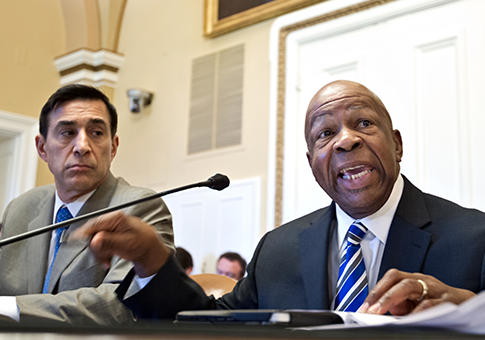Some banks used a federal program intended to increase lending to small businesses to circumvent restrictions placed on them by the federal economic bailout, a congressional hearing Wednesday morning revealed.
Congress bailed out much of the banking industry in the wake of the 2008 financial crisis with loans through the Troubled Asset Relief Program (TARP). When this program failed to adequately stimulate lending to small businesses, Congress created the Small Business Lending Fund, or SBLF.
However, many banks used loans from the SBLF to repay their TARP debt and escape its restrictions on governance and compensation, said Christy Romero, special inspector general for TARP.
Additionally, some of these banks actually decreased lending after receiving the funds, Romero said before the House Oversight and Government Reform Committee.
When the SBLF program was introduced, President Barack Obama said it would help "main street banks lend to main street businesses," according to a video clip played by committee Chairman Darrell Issa (R., Calif.).
While the bill explicitly allowed banks to refinance debt they had incurred from the TARP bailout, Issa said the money would have been better spent on small business loans.
Two-thirds ($2.7 billion) of the money distributed through the SBLF program went to 137 banks in TARP, Romero said. The majority of the money ($2.1 billion) went to repay the banks’ TARP debt.
"These TARP banks used approximately $2.1 billion of the SBLF funds as a vehicle to exit TARP, escape TARP’s restrictions on executive compensation and luxury expenditures, and pay less for taxpayer money," Romero wrote in her prepared testimony.
The banks that used SBLF money to exit TARP increased lending on average by only $1.13 for every $1 they received from the fund.
Of the 137 banks, 24 actually decreased their lending.
Some of those were among the largest loan recipients under the program, Romero testified.
In contrast, Romero testified, banks that did not receive any bailout money through TARP increased lending on average by $3.45 for every $1 they received from the small business fund.
Former Secretary of the Treasury Timothy Geithner has told Congress that each dollar loaned to banks through the SBLF program would increase lending by eight to ten dollars, a point raised by Issa.
"There are real inconsistences between what was said and what was done," Issa said.
While the banks were supposed to demonstrate a plan to increase their lending capability with the new funds, the Treasury Department failed to examine the banks’ plans adequately, Romero said.
Issa drew attention to the minimal application process banks had to undergo to receive millions in dollars of loans through the program, a process that Romero described as a "check the box" review.
The Treasury Department refused to testify, Issa said. Issa indicated he would hold another hearing if he did not hear back from the department with answers to his questions.
Committee ranking member Elijah Cummings (D., Md.) also indicated some frustration that Treasury was not testifying. Cummings blamed their absence on the fact they had only eight days notice, which Cummings deemed insufficient.
Cummings sought to defend the SBLF program and its effects, calling it a "marked success."
He pointed to the help it has given businesses in his home state of Maryland as an example of its benefits, and he expressed concern that the entire program would be tarred by the actions of a few banks.
